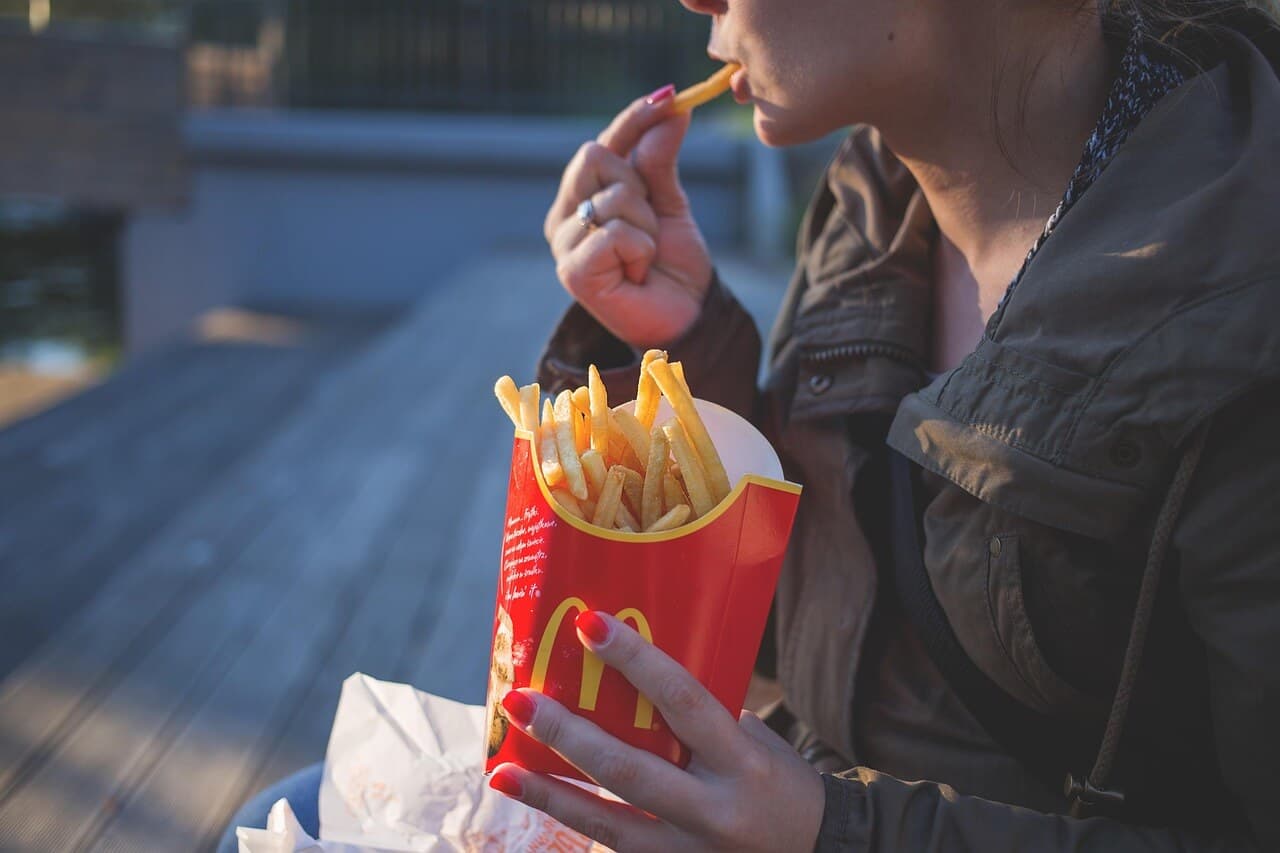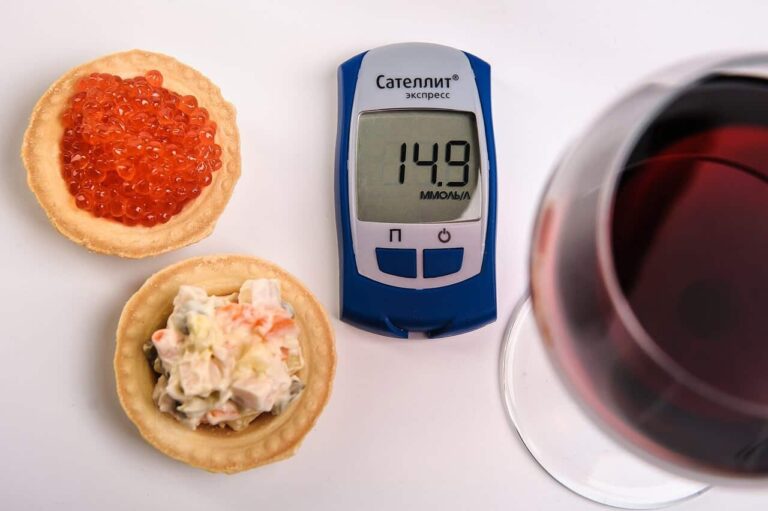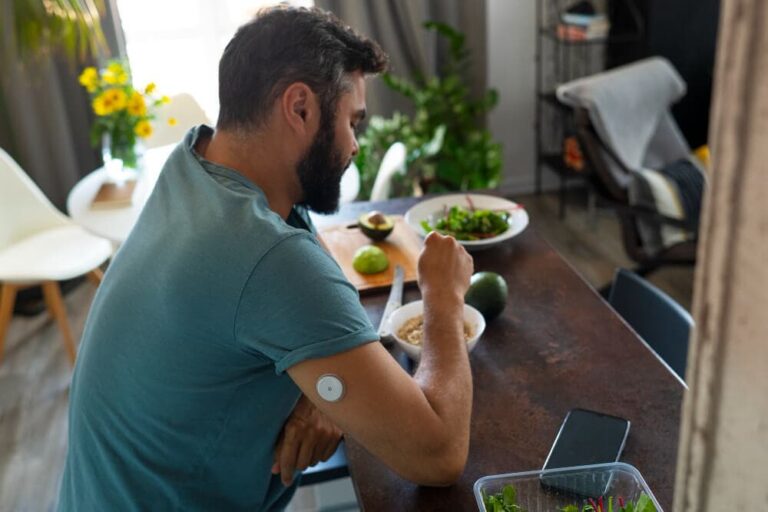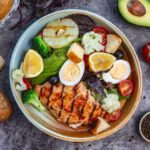Ah, McDonald’s. The smell of those salty fries hits you from a block away. It’s the beacon of a thousand road trips, the solution to a “too tired to cook” Tuesday, the place where childhood memories were made over a Happy Meal. So, let’s look at what to eat at McDonald’s with Type 1 Diabetes.
And for those of us with Type 1 Diabetes, it’s a place that can trigger a special kind of anxiety. The glowing menu board feels less like a list of options and more like a high-stakes math test you didn’t study for.
But let’s get one thing straight: having a faulty pancreas doesn’t mean you’re banned from the Golden Arches for life. It doesn’t mean you have to sadly sip on a bottle of water while your friends enjoy their burgers. It just means you need to walk in with a strategy. It means swapping the “Super Size Me” mindset for a “Super Smart Me” approach.
So, buckle up. We’re not here to forbid the Big Mac; we’re here to outsmart it.
The Usual Disclaimer: I’m your content manager and fellow T1D, not a registered dietitian or a doctor. This guide is based on nutritional data, community wisdom, and personal experience. Always use your own judgment, check nutritional info (as it can vary), and consult your healthcare team for personalized advice.
The Challenge of What to Eat at McDonald’s with Type 1 Diabetes
Before we talk about what to order, we need to understand why fast food is such a unique challenge. A meal from McDonald’s isn’t like a home-cooked dinner. It’s a perfect storm of three things:
- Refined Carbs: The buns, the fries, the breading on the nuggets—they’re all fast-acting carbs designed to hit your bloodstream quickly.
- Hidden Sugars: That tangy Big Mac sauce? Ketchup? Even the “healthier” salad dressings? They’re often loaded with sugar you don’t account for.
- The Fat & Protein Factor: This is the big one. The high fat content in the burgers, fries, and nuggets does something sneaky: it delays digestion.
The “Afterparty Spike”: Understanding the Fat and Protein Rise
This is the phenomenon that trips up even experienced T1Ds. You eat, you take your insulin, and two hours later, your blood sugar looks great. You feel like a genius. Then, four or five hours later, your CGM starts screaming. Your blood sugar is inexplicably skyrocketing.
What happened? Welcome to the fat and protein “afterparty.”
- The Carbs are the loud, flashy guests who arrive first. Your pre-bolus of insulin is there to greet them at the door.
- The Fat and Protein are the quiet guests who hang back. They slow everything down and then, hours later, long after your fast-acting insulin has gone home, they decide to start their own party, causing a slow, stubborn, delayed glucose rise.
Understanding this “second wave” is the key to conquering a McDonald’s meal.
Your McDonald’s Survival Guide: Building a Smarter Tray
Let’s break this down into actionable missions, from easiest to hardest.
Mission 1: The “Safe & Speedy” Low-Carb Options
You’re on the road, you’re starving, you just need something that won’t wreck your day.
- Your Best Bets:
- 6-Piece Chicken McNuggets (Approx. 16g carbs): Surprisingly low-carb on their own. The danger is the sauce (see below).
- Hamburger / Cheeseburger (Approx. 30-32g carbs): Simple, predictable, and the carb count is manageable. Ask for no ketchup to save a few grams.
- Apple Slices (Approx. 5g carbs): The undisputed champion of safe sides.
- Side Salad (Approx. 3g carbs): A great way to add volume. Bring your own low-carb dressing if you can.
- Drinks: Unsweetened Iced Tea (0g), Black Coffee (0g), Diet Soda (0g), or the MVP, Water (0g).
Mission 2: The “Classic Craving” Combo (Burger + Fries)
Okay, you’re here for the real deal. You want a burger and fries. You can do this.
- The Strategy: Portion control is your superpower.
- The Burger: Stick with a basic Cheeseburger or McDouble. Avoid the “Quarter Pounder with Cheese” or “Big Mac,” which have more carbs and fat, making the afterparty spike even bigger.
- The Fries: Order a Small Fries (approx. 29g carbs). Not a medium. Not a large. If you get a meal, consider giving half the fries to a friend or just throwing them away. Yes, it feels wasteful, but your stable blood sugar is worth more.
- Total Carbs: A Cheeseburger + Small Fries is around 60-65g carbs. This is a significant carb load, but it’s a known quantity.
Mission 3: The Breakfast Run
McDonald’s breakfast can be surprisingly manageable if you choose wisely.
- The Winner: The Egg McMuffin (Approx. 30g carbs). It’s a perfect balance of protein, fat, and a reasonable amount of carbs from the English muffin. It’s one of the most stable options on the entire menu.
- The Trap: The Hotcakes and Sausage (Approx. 80-100g+ carbs with syrup). This is a massive, fast-acting sugar bomb. Approach with extreme caution or avoid it altogether.
The Insulin Game Plan: How to Bolus Like a Pro
Ordering smart is half the battle. Dosing smart is the other half.
- Check the App First: The McDonald’s app has a brilliant nutrition calculator. Build your meal in the app before you order to get a precise carb count. No guessing!
- The Pre-Bolus is Your Friend: For any meal over 30g of carbs, giving your insulin a 15-20 minute head start can help curb the initial spike from the refined carbs.
- Consider the “Afterparty” Bolus: For a high-fat meal like a burger and fries, a standard bolus might not be enough. This is where an extended bolus or split bolus on an insulin pump comes in handy. You could take 60% of the dose upfront and have the remaining 40% deliver over the next 2-3 hours to combat that delayed rise. (MDI users can mimic this by taking a second, smaller injection an hour or two later, but only do this after discussing the strategy with your endocrinologist).
- Beware the Sauces: That little packet of Sweet ‘n Sour sauce? 12g of carbs. Ketchup? 3-4g. They add up. Factor them into your count.
Final Thoughts: It’s a Meal, Not a Moral Failure
Living with Type 1 Diabetes can feel like being on a permanent, restrictive diet. But life happens. Road trips happen. Cravings for salty, greasy goodness happen.
Going to McDonald’s isn’t a “cheat meal”; it’s just a meal that requires more math. It’s not a sign of weakness; it’s a sign of being human. You’re not bad for wanting fries. You’re a brilliant mathematician with a pancreas that took early retirement.
So do your research, dose with intention, and enjoy your meal without an ounce of guilt. You’ve got the tools. You’ve got the strategy. You’ve got this.











